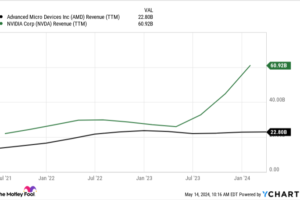
Gold futures ended lower on Tuesday as the steady march toward conflict in Russia over Ukraine was seen easing somewhat, weakening the case for safe-haven bullion after the commodity rallied to highs not seen since mid November.
Russia’s Defense Ministry has said it has pulled back a portion of its forces amassed outside Ukraine’s border, even as some battalions were seen moving on a war footing, according to reports.
U.S. officials have said Russia could launch an attack on Ukraine as soon as Wednesday, with more than 100,000 troops at the ready, according to reports, including those from The Wall Street Journal.
For now, gold prices have backed off as Russian President Vladimir Putin has “pulled his needle away from the balloon” that has recently formed in gold prices, fueled by inflation, and the “pain trade is becoming less of a threat,” Adam Koos, president at Libertas Wealth Management Group, told MarketWatch.
Against that backdrop, gold for April delivery GCJ22, -0.69% GC00, -0.69% was trading $18.30, or 1%, lower to trade at $1,851.10 an ounce. Most-active gold futures on Monday stretched their steak of gains into a seventh-consecutive session, settling at the highest level since Nov. 17, FactSet data show.
Read an opinion column: Why gold isn’t likely to be a safe haven for your money if Russia invades Ukraine
Also see: Why the Russia-Ukraine crisis may make food-price inflation even worse
The softening of rhetoric around a possible annexation of Ukraine by Russia also was pushing assets perceived as risky, such as stocks, sharply higher, with the Dow Jones Industrial Average DJIA, +1.12% and the S&P 500 SPX, +1.40% substantially higher, luring some investment demand away from gold.
Gold has taken a decisively more bullish run higher in recent weeks, supported primarily by the threat of war in Eastern Europe, concerns about the global recovery from the pandemic, and the reaction of central banks world-wide to rising inflation.
Gold prices fell Tuesday, in part, due to a possible Russia-Ukraine “pullback from brink of war, but one day does not end a crisis of this magnitude,” Jeff Wright, chief investment officer at Wolfpack Capital, told MarketWatch.
On Tuesday, prices for the precious metal pared some of their early losses, then fell back, despite data showing U.S. wholesale prices jumped 1% in January, more than the 0.5% increase forecast by Wall Street economists and the largest gain in a year. Wright said he could “not find any positive take away” in the latest inflation data.
Expect more consumer inflation in months to come, he said. Knowing this, along with comments from St. Louis Fed President James Bullard Monday on “front loading” Federal Reserve action, interest rate increases along with quantitative tightening will begin very soon, Wright said.
In relation to gold, this is not a positive and gold is likely to move lower in coming weeks “if the safe-haven interest and safety dissipates,” he said. Gold may hold the $1,800 level for awhile but over time, holding that level “will be difficult without fresh interest or inflows of capital.”
Meanwhile, March silver SIH22, -1.92% SI00, -1.92% settled at $23.342 an ounce, down 51 cents, or 2.1%. March copper HGH22, +0.49% tacked on 0.5% to $4.532 a pound.
April platinum PLJ22, -0.29% lost 0.7% to $1,020.40 an ounce, while March palladium PAH22, -4.20% declined by 4% to $2,252.30 an ounce, giving back over half of the nearly 7% it gained Monday, as supply risks linked to Russia, a major producer of both platinum and palladium, eased.
















Add Comment